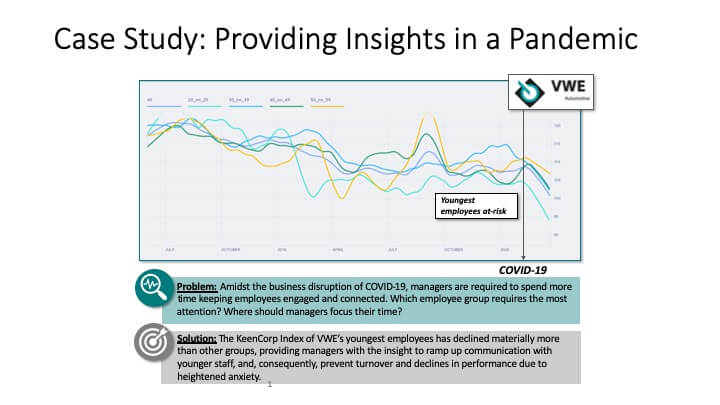Boeing’s 737 Max issues highlighted the company’s sacrifice of safety for financial performance, resulting in a tarnished reputation. The prioritization of profit over core values also damaged the FAA’s credibility and revealed a lack of accountability for top executives. This downfall serves as a reminder of the importance of maintaining core values and prioritizing them over short-term financial gains.

Need to Escape, Flights to Nowhere!
As I have discussed several times, we are struggling in the COVID world of working more hours, with more conference calls, little time to turn off and recharge. However, breaks are more critical as we need downtime from deadlines and stress and to recharge. Burnout is becoming a large factor and causing falling productivity among all of us. We work longer but are less effective. Thus while overall productivity may be ahead, the cost is enormous.
Furthermore, with Zoom, Skype, Teams, Hangout, etc., there is a belief that since you are at home, you are always available. One executive I know has been in the Azores for a couple of weeks with his wife as she is from there. A board he is on just rescheduled its board meeting, and he is facing a board meeting from 12 am to 3 am, which in my opinion, is ridiculous. We all need to understand that many of us are no longer where we were during regular times. Some are at vacation homes, some are with elderly parents, some are stuck in other countries, and some are homeschooling kindergarteners first thing in the morning. Thus, we need to adopt a much efficient approach and ask if times are convenient for all the call’s potential members.
The assumption that everyone is available at all times so we can put meetings on their schedule at any time is causing even more chaos and exhaustion. Further, while the new time might suit the most senior member of the call, if they need input from the others who cannot provide it due to the time, then the meeting is a waste of time, and burnout increases.
I took a week’s vacation about three weeks ago and failed miserably. The best I managed was one day with only one call and four hours of work. Looking at my falling productivity, burnout, and listlessness, my wife and I agreed on a do-over. This week we took another vacation, and I have done much better with little work and meetings. I can already feel my energy levels and thinking improve. We all need a break, and like on airplanes, when the oxygen mask comes down, take care of yourself first, so you can then take care of others.
Thus, finding time to create that quiet space where you can reflect and recharge your batteries is a battle that many of us now face. Many executives say the most significant thing they miss in our new world is that time on aircraft when they were effectively out of reach and had that quiet time.
Naturally, markets responded, and some airlines, none in the U.S., are offering “Flights to Nowhere.” Thousands of people have booked flights in Brunei, Taiwan, Japan, and Australia that finish where they started and are called either “scenic flights” or “flights to nowhere.”
- Royal Brunei, since mid-August, has flown five of these flights. As Brunei has had very few coronavirus cases, passengers are not required to wear masks, but staff members are.
- EVA, the Taiwanese airline, sold all 309 seats on its Hello Kitty-themed A330 Dream jet for Father’s Day.
- Japan’s All Nippon Airways had a Hawaiian-resort-themed, 90-minute-flight with 300 people on board.
- Qantas sold out its flight to nowhere over Australia in 10 minutes last Thursday. Tickets ranged in price from $575 to $2,765. The flight will go around Australia, flying over the Northern Territory, Queensland, and New South Wales.
- Qantas has also brought back its popular sightseeing flights to Antarctica that don’t land in Antarctica but allow passengers to walk around the aircraft and have different Antarctica views.
- Starlux, the Taiwanese airline, is working to make the flight-to-nowhere experience a luxurious one by allowing people to buy packages for the flight and a hotel stay. Since August, the airline has run six flights to nowhere and has about a dozen more scheduled through October, and most of them have sold out within 10 minutes of being announced. The airline requires masks and social distancing on all fights.
For those that see flying more than as a method of getting from A to B, these flights provide either the exciting flying experience or the quiet time they have missed due to COVID. For those who need to escape being online always. I can appreciate the quiet time flying provided. I loved long-haul flights with no WiFi and considered them a great time to read and get “thought” work done. But the idea of a “flight to nowhere” has little appeal. I have my first cross country flight since March next month, and while I may change my view, I doubt it.
However, for those executives who cannot manage to find a quiet time without getting on a plane, I would suggest revisiting your priorities and finding that peaceful time once a week of at least two hours. Make sure that:
- You have blocked out the time on your calendar, so you cannot be disturbed;
- You have turned off your phone;
- If using your computer, you have turned off your email; and
- You are somewhere where you will not be disturbed by a spouse, partner, kids, or pets.
Furthermore, start considering all the others on your multitude of video calls to ensure that the times suit them and that they will be in a position to provide the most significant input. Otherwise, you are just increasing stress and burnout and doing nothing productive.
I believe quite times to be of great value, and if you can create that habit and space now, it should serve you well after COVID has ended without a need to fight your way through airports, security, and eat lousy food. I think we all would benefit from more of this time, especially as we are “busier” than ever but are questionably productive.
Copyright (c) 2020, Marc A. Borrelli
Recent Posts
The Downfall of Boeing: A Lesson in Core Values
Resolutions, Here We Go Again.
In reflecting on 2021 resolutions, the author scored themselves in three categories and sought to improve success in 2022 by addressing friction points. Drawing on advice from social psychologist Wendy Wood, the author identified areas to reduce or increase friction in their failed resolutions. By making these adjustments, the author aims to enhance their goal achievement and encourages others to consider friction when setting resolutions.
You need to take an extended vacation. No, seriously, you do.
COVID has taken a toll on all of us. If you have not taken an extended vacation in a while where you disconnect, you need to now. You and your business will benefit.
Becoming Famous in Your Niche: The Success Story of Linn Products Limited
In a previous discussion, I highlighted the importance of being famous for something. Being well-known in your niche can help you: Concentrate on your strengths Connect with your target audience Communicate your offerings more effectively Receive referrals Identify...
Understanding and Optimizing Your Cash Conversion Cycle
Understanding and optimizing the Cash Conversion Cycle is crucial for business growth, as it impacts cash flow and the ability to access external capital. This cycle consists of four components: Sales, Make/Production & Inventory, Delivery, and Billing and Payments. To improve the Cash Conversion Cycle, companies can eliminate mistakes, shorten cycle times, and revamp their business models.
Discovering Your Niche: Why You Need to Be Famous for Something
As an entrepreneur, it’s crucial to specialize in a specific area and become famous for something, allowing you to generate referrals and build your brand. Understanding the “job” you’re hired for helps you stand out in the marketplace and communicate your value proposition effectively. By providing value to your clients, you can adopt a value-based pricing approach, ensuring your business remains competitive and maintains a strong market presence.
Rethinking Your Pricing Model: Maximizing Margins and Providing Value
Rethink your pricing model by focusing on the value you provide and your customers’ Best Alternative To a Negotiated Agreement (BATNA). This approach can help you maximize margins while delivering better value to your clients. Assess your offerings and brainstorm with your team to identify pricing adjustment opportunities or eliminate commodity products or services.
Do you know your Profit per X to drive dramatic growth?
I recently facilitated a workshop with several CEOs where we worked on the dramatic business growth model components. One of the questions that I had asked them beforehand was, "What is Your Profit/X?" The results showed that there this concept is not clear to many....
The War for Talent: 5 Ways to Attract the Best Employees
In today’s War for Talent, attracting the best employees requires a focus on value creation, core customer, brand promise, and value delivery. Clearly articulate your company’s mission, identify your “core employee” based on shared values, and offer more than just a salary to stand out as an employer. Utilize employee satisfaction metrics and showcase your company’s commitment to its workforce on your website to make a strong impression on potential candidates.
Are you killing your firm’s WFH productivity?
Productivity remained during WFH with COVID. However, further analysis found that hourly productivity fell and was compensated for by employees working more hours. What was the culprit – Meetings. Want to increase productivity, have fewer meetings.












